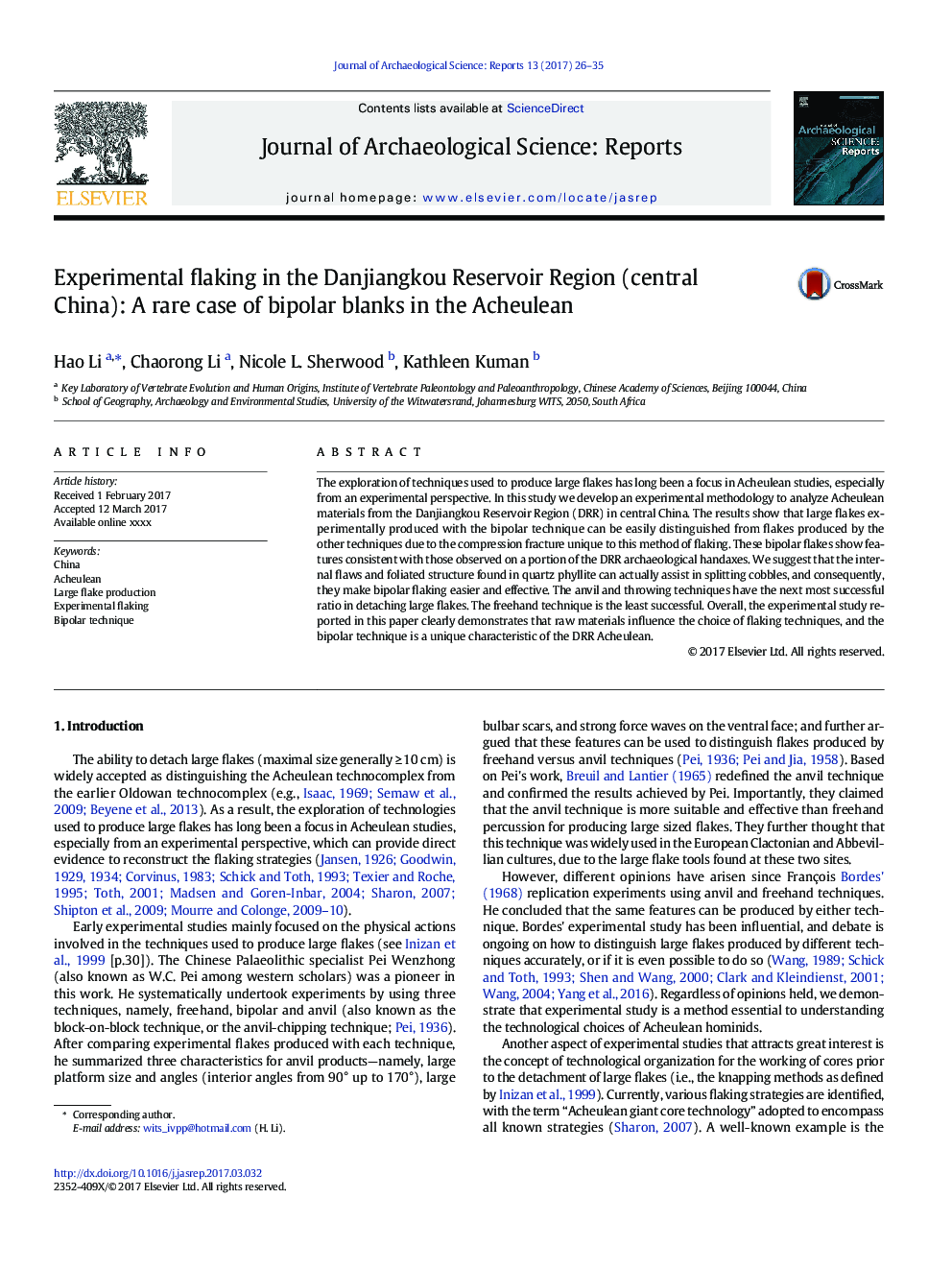| Article ID | Journal | Published Year | Pages | File Type |
|---|---|---|---|---|
| 5112396 | Journal of Archaeological Science: Reports | 2017 | 10 Pages |
Abstract
The exploration of techniques used to produce large flakes has long been a focus in Acheulean studies, especially from an experimental perspective. In this study we develop an experimental methodology to analyze Acheulean materials from the Danjiangkou Reservoir Region (DRR) in central China. The results show that large flakes experimentally produced with the bipolar technique can be easily distinguished from flakes produced by the other techniques due to the compression fracture unique to this method of flaking. These bipolar flakes show features consistent with those observed on a portion of the DRR archaeological handaxes. We suggest that the internal flaws and foliated structure found in quartz phyllite can actually assist in splitting cobbles, and consequently, they make bipolar flaking easier and effective. The anvil and throwing techniques have the next most successful ratio in detaching large flakes. The freehand technique is the least successful. Overall, the experimental study reported in this paper clearly demonstrates that raw materials influence the choice of flaking techniques, and the bipolar technique is a unique characteristic of the DRR Acheulean.
Related Topics
Social Sciences and Humanities
Arts and Humanities
History
Authors
Hao Li, Chaorong Li, Nicole L. Sherwood, Kathleen Kuman,
